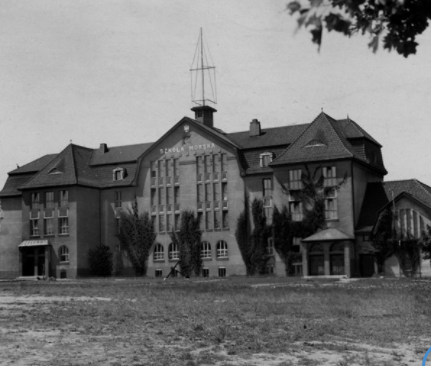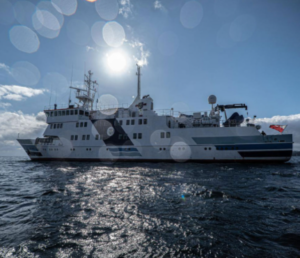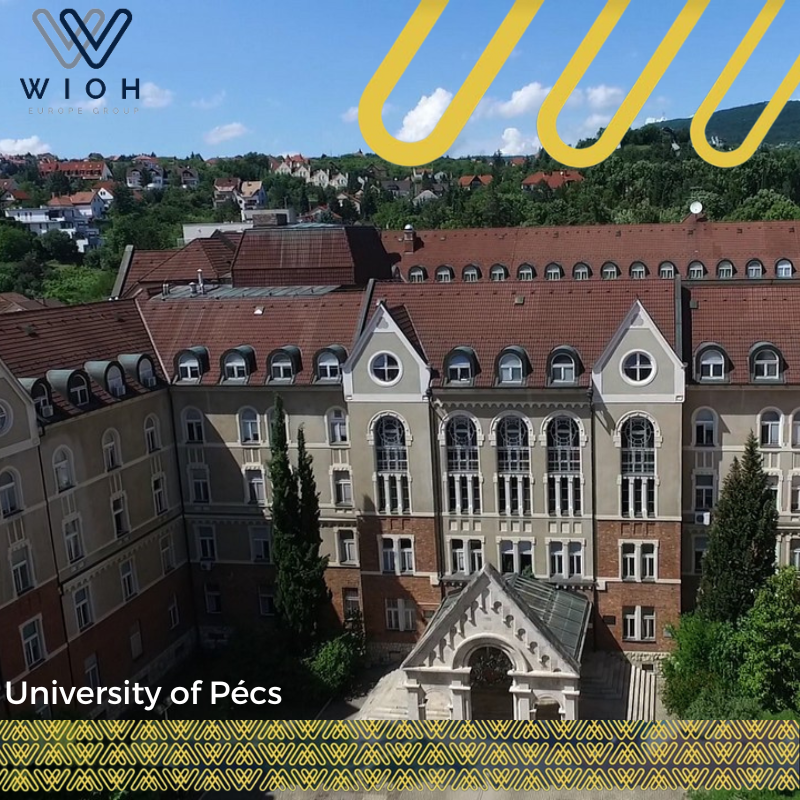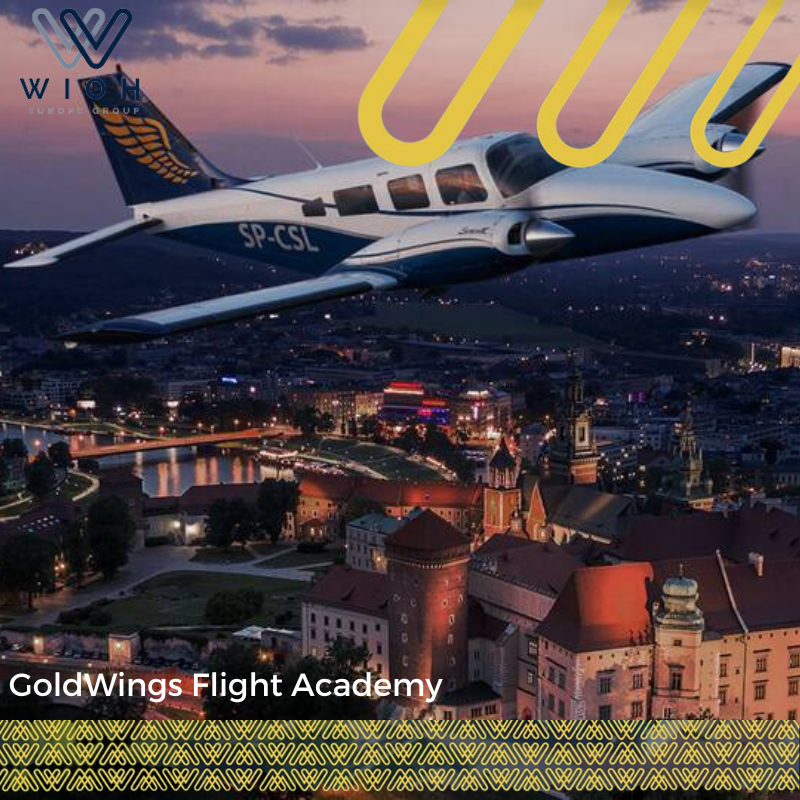Gdynia Maritime University – GMU is the largest public school of higher maritime education in Poland and one of the largest in Europe.
Since 1920, the university has been preparing graduates for officer positions on merchant marine vessels and managerial positions in onshore institutions and companies representing the maritime industry and coastal regions. The university’s four colleges offer degrees in navigation sciences, management, quality, marine engineering, and electrical engineering. 5000 students are currently enrolled in the university.
University Rankings:
_According to SJR, it was ranked 59th in Poland, and 604th in the world for 2021.
_ According to QS, it ranked 24 in Poland, and 241 in the world for the year 2020.
_ According to Perspektywy, it was ranked 76th in Poland, and 71st in the world for the year 2020.
University History:
 The more than 100-year history of Gdynia Maritime University began with the order of General Joseph Leśniewski, signed on June 17, 1920, to establish the Naval School.
The more than 100-year history of Gdynia Maritime University began with the order of General Joseph Leśniewski, signed on June 17, 1920, to establish the Naval School.
December 8, 1920 was the historic date of the official opening ceremony of the first naval school in the reborn Republic of Poland. On that day, in Tczew, a white and red flag was festively hoisted on the mast of the former women’s gymnasium building. The school opened its activity in two faculties – navigation and mechanics.
The organizers of the First Polish Naval School were convinced that the training of officers of the future Merchant Navy should take place mainly during sea voyages. It became necessary to purchase a suitable vessel for the new facility. While searching in European ports, attention was drawn to the three-masted sloop “Nest” (built in 1869 in Birkenhead).
State Naval School in Gdynia
In 1928, a decision was made to move the school from Tczew to Gdynia. On December 8, 1930, the new building of the State Naval School in Gdynia was ceremonially opened.
A real research and teaching base has been established at the new Gdynia facility. The main building houses offices for physics, electrical engineering, chemistry, and materials science, as well as diffraction coefficient, navigation, radio engineering and radio geography with a short-wave radio station. Launching a weather station and a rope and sailing workshop. Scientific offices, laboratories and mechanical workshops with a blacksmith and locksmith shop are located in a specially designed building.
In the academic year 1930/1931, the well-serviced ship “Lwów” was replaced by another school sailing ship – “Dar Pomorza”.
The new sailing ship of the National Naval School was the first ship to circumnavigate the world under the white and red flags. It was the most famous and longest voyage in the History of the Frigate Biawa. It started on September 16, 1934 and lasted 352 days.
In 1938 the College of Transport and Maritime Administration was established. The outbreak of World War II began a new stage of education in the history of the State Naval School – in exile.
The staff of the State Naval School, on December 2, 1939, after their arrival in Great Britain, submitted to the reconstructed Ministry of Industry and Commerce a “temporary project for the organization of a naval school in England”. The Southampton Naval School at the local university college was directly affiliated with the Gdynia School.
The first course began on September 18, 1940, and education continued in specific wartime conditions for eight months, and the scope of the curriculum included the knowledge required for the rank of junior naval lieutenant.
In Southampton, training in navigation was carried out in 1940-1943, after which the Naval School was transferred to London, where in the years 1943-1945 training was conducted in courses for aspirants – lieutenants of the class or junior mechanics.
In England there was also a marine gymnasium which was organized in 1945 at Landywood near Birmingham. Carol Borchardt was the facility manager from 1945-1946. In 1947, the preparatory school moved to Lilford, near Peterborough in Northamptonshire. The school ceased to exist in 1949.
The activity of the Polish naval cadres training units ended with the withdrawal of Western Allies support to the Polish government in London.
For the State Naval School in Gdynia
The first post-war entrance examinations to the State Naval School were held on October 8-14, 1945.
On November 7, 1945, the Navy returned the Pomorza House to the State Naval School in Gdynia, obligating the school to accept candidates for the Naval Officers’ School for joint practice.
By a decision of the Minister of Maritime Transport and Foreign Trade, on September 1, 1947, the Naval School was established in Szczecin, with the transfer of the Navigational Department of the Gdynia State Naval School, together with the Director of the Captain. z.w. Konstanty Maciejewicz and “Dar Pomorza” (the main port was still Gdynia). Only the Faculty of Mechanical Engineering at the State Naval School.
In 1951, both schools were renamed to the Naval Mechanical Technical School in Gdynia and the Naval Navigational Technical School in Szczecin.
Two years later, the Navigational Department and the frigate “House Pomorza” returned from Szczecin to Gdynia.
In 1954, recruitment took place in the newly created Faculty of Electrical Engineering, and the school was renamed the Naval School, by order of the Minister of Shipping, and two years later to the State Naval School.
 In 1958, the State Naval School received the status of a post-secondary technical university.
In 1958, the State Naval School received the status of a post-secondary technical university.
And in 1962 the motorized ships – “Horyzont” were put into service, and they were delivered to the State Naval School in Gdynia. They served for 35 years.
Gdynia Maritime University:
At the end of the sixties, the State Naval School was merged with the State School of Marine Fishing, existing since 1946, and in 1968 it was transformed into the Gdynia Maritime University.
In 1982, the sloop “Dar Młodziey” entered service.
From 2001, the university was called Gdynia Maritime University. It was the culmination of many years of efforts made by the authorities and employees of the Maritime University, increasing its scientific rank and prestige.
 With effect from September 1, 2018, by decree of the Minister of Maritime Economy and Inland Navigation, the university is named after Gdynia Maritime University. The change was related to getting the
With effect from September 1, 2018, by decree of the Minister of Maritime Economy and Inland Navigation, the university is named after Gdynia Maritime University. The change was related to getting the
Qualifications required to award a PhD degree and meet the requirements of universities.
In the fall of 2019, by decision of the Minister of Science and Higher Education, the Naval Institute of Gdansk entered the structures of the Gdynia Maritime University – a scientific and research unit with significant achievements, which works for the benefit of widely understood people. Maritime economy for half a century.
On October 5, 2019, the first opening of the academic year took place at Gdynia Maritime University, the 100th opening of the new year of study in the history of Polish naval education.
Teaching staff:
Rector: dr. hab. inż. kpt. ż.w. Adamem Weintritem
Fields of study: It includes 9 fields of study and 42 majors.
Campus:

Faculties:
The university campus includes four faculties:
1_ Faculty of Electricity
2_ Faculty of Mechanical Engineering
3_ College of Management and Quality Sciences
4_ Navigation section
It also includes:
1_ Naval Institute
2_ Department of Shipbuilding and Maritime Practices
University’s library :
The library was established with the establishment of the State Naval School in Chizu in 1920. The founder and first director was Dr. Alexei Majowsky. Initially, it was a small library, and its book collection profile was tailored to the needs of the school. It primarily contained textbooks, encyclopedias, dictionaries, and fiction.
In 1930, the library of the State Naval School was moved with the school to Gdynia. From the years 1930-1939 and from the period of occupation, no documents remain that testify to the library’s activity and development.
In 1945, with the resumption of teaching, work also began on the organization of the library. This task was performed by Cpt. z.w. Wacław Zagrodzki. Organizing the library in post-war conditions was not easy, because the collection of books from the interwar period was destroyed and swallowed up.
As a result of the merger of two universities on the basis of which the Higher Naval School was created, the book collection of the State Maritime School of Gdynia and the State School of Maritime Fishing were also merged into a single body to serve the students and workers of WSM
In the following years the book collection was expanded to include scholarly and professional publications on topics offered for WSM programmes.
In 2014, the main library facilities and stores were moved to new rooms, adapted from the old boiler room.
The main library of the University of Gdask collects a collection of books that meet the needs of staff and students as well as the research and teaching needs of the faculties.
It collects Polish and foreign publications specialized in publications covering the marine and land areas of the maritime economy, in the following areas of knowledge:
Humanities, including philosophy, history, and culture.
Engineering and technical sciences, including automation, and electronics. Electrical engineering, communications, mechanical engineering, materials engineering, transportation, and navigation.
Medical sciences and health sciences including dietician medicine.
Agricultural sciences, including food technology and nutrition.
Social sciences, including economics, finance, law, sociology, psychology, management, and quality sciences.
Exact and natural sciences, including mathematics, astronomy, physics, chemistry, biology, geography and oceanography.
Research projects
Gdynia Maritime University undertakes research, research and development, general development and implementation work. Financial resources for its implementation are obtained, among others, from the National Science Center, the National Research and Development Center, the National Agency for Academic Exchange, the Ministry of Education and Science and European Union institutions.
Competencies related to supporting the implementation process, implementation and settlement of projects have been assigned to four organizational units of the UMG:
Department of Science (RNN), Department of Cooperation and Development (RWW), Intellectual Property and Marketing Research Team (CCR), Project Service Center (COP).
The Science Department supports the proper implementation of activities in the field of research projects jointly financed by budget support, as well as research and development work, the funding of which comes from the programs and competitions of the National Science Center, the National. Research and Development Center, Ministry of Education and Science programs, funding institutions and other regional programs.
The Department for Cooperation and Development coordinates activities in the field of European projects financed or co-financed from foreign sources, including. Such as Horizon 2020, the Horizon Europe programme, European Economic Area (EEA) and Norwegian funds, as well as international projects based on cooperation with foreign partners, including such as INTERREG cooperation programmes, ERA-NET CO-FUND, as well as funded projects Under IAMU and NAWA.
International cooperation
Gdynia Maritime University, implementing the maritime policy assumptions of the Republic of Poland and following the priorities of the university’s development strategy, has been successfully developing cooperation with foreign research and education centers as well as international institutions for many years.
Partner universities
Gdynia Maritime University cooperates with foreign universities on the basis of bilateral agreements between universities regarding joint research and teaching activities.
We mention some of the foreign partner universities as follows:
Australian Maritime College, Australia
Nikola Fabsarov Naval Academy, Bulgaria
Shanghai Maritime University, China
University of Rijeka – Faculty of Maritime and Transport Studies, Croatia
Batumi Naval Academy, Georgia
Hochschule Bremen, Germany
Sekolah Tinggi Ilmu Pelayaran, Indonesia
Tokyo University of Marine Science and Technology, Japan
Escola Náutica Infante D. Henrique, Portugal
Vasile Alecsandri, University of Bacau, Romania
Admiral Makarov State University of Maritime and Inland Navigation, St. Saint Petersburg, Russia
Ternopil National Economic University, Ukraine
Vietnam Maritime University, Vietnam
International organizations
The improvement of educational and training processes as well as the development of research work, among other things, is carried out thanks to the active activity of UMG employees in international organizations and institutions
1_ IEEE
IEEE is the world’s largest professional technical organization dedicated to technology development. The main objective of the organization is to promote technological innovation and progress for the benefit of mankind.
2_ International Association of Maritime Universities
The International Association of Maritime Universities IAMU is a global network of leading maritime universities providing maritime education and training for global shipping.
3_ International Maritime Organization
The International Maritime Organization of London (IMO) is a United Nations agency of the United Nations that deals with maritime matters, particularly the safety and security of shipping, and the prevention of pollution of the marine environment by ships.
4_ International Organization for Mobile Satellites
The International Mobile Satellite Organization of London (IMSO) is an intergovernmental organization whose primary objective is to oversee the security of certain public satellite communications services provided by mobile satellite communications systems.
Ships:
Training ships have always been an integral part of the training of Polish sailors. The operation of ships and the regulation of marine practices are handled by the Department of Shipbuilding and Naval Practices of the Gdynia Maritime University.
Two ships are currently used for training:
Frigate “Dar Młodziey”:

A sailing ship built in 1982 by the shipyard in Gdansk. On the ship, the Naval Training Program for students is carried out, mainly at the Faculty of Navigation.
Students of the Naval University in Szczecin, students of naval secondary schools, cadets from foreign centers of education for fleet personnel and sailors – lovers of large sails also conduct training courses in the “Dar” program.
Training and research ship “Horyzont II”:
It is a modern floating educational laboratory. It was built in 2000 on the hull of the polar sailing ship “Polarks”.
The unit is equipped with a variety of modern navigation systems, the ship is also adapted to conduct specialized marine research work, and regularly cruises to the polar regions.
In the past, a whole fleet of ships of various constructions and purposes was used for training.
The main units were large sailing ships: “Lwów” and “Dar Pomorza”.
In the first period after World War II, smaller sailing ships were also used for training: “Janik Kraske”, “Call of the Sea”, “Henrik Rutkowski”. Specialized marine practices were carried out on the so-called “Horyzont” and “Zenit” motorized ships (the twins “Azymut” and “Nawigator” were operated in Szczecin).
Deep-sea fishermen have been trained on the training ship “Jan Turlejski”
University features:
With the acquisition of the Naval Institute, the university’s fleet also increased. In addition to “Dar Młodziey” and “Horizon II”, the flag of Gdynia Maritime University was hoisted by a modern search raft “Emour” working for the Naval Institute.The university is among the European universities to which the European Commission has awarded the new Erasmus University Charter, the so-called ECHE Card (Erasmus Charter for Higher Education) for the year 2021-2027.
During the 1st Poland-China Regional Forum, UMG and SMU were honored with the “Best Practices” award for the best example of long-term Polish-Chinese cooperation.






